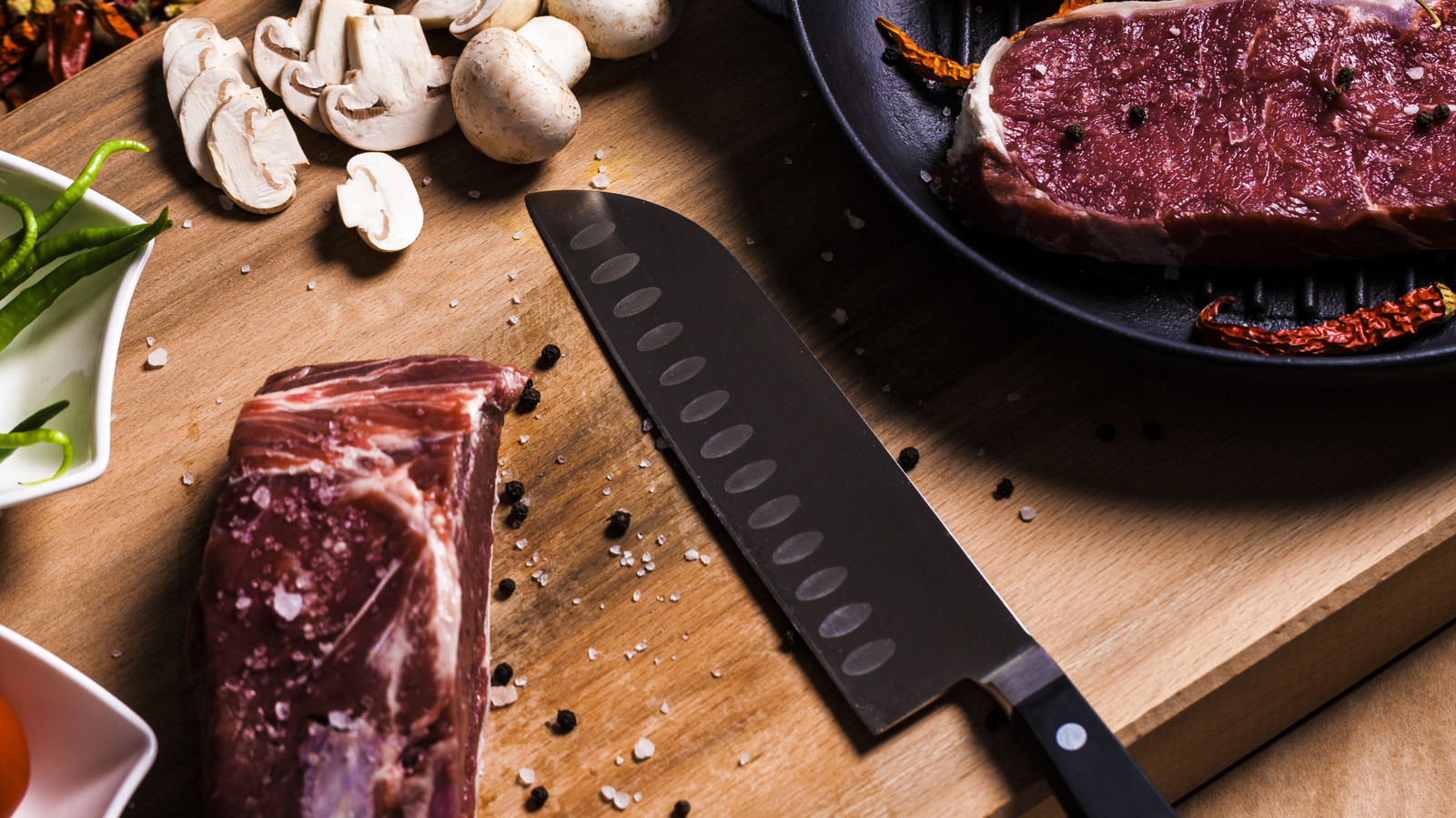
"Some knives are adorned with dimples, often called "scallops" or a "Granton edge," to prevent moist foods from sticking to the blade, perfect for slicing delicate salmon. With a dimpled chef's knife, the divots create air pockets and release some surface tension that causes damp foods to suction against the blade. Just think about how often bits and pieces of the food get stuck to a regular knife when you're cutting a large piece of meat like prime rib or fruits and vegetables like potatoes."
"Although knives with dimples are typically called "Granton edges," they're not necessarily a Granton blade. Granton Knifemakers is a brand that patented its design for knives with dimples that touched the edge of a blade over 80 years ago, but a knife technically isn't considered a Granton edge unless it was manufactured by the company. Granton edge and dimpled knives are sometimes also called "kullenschliff," a German word that means "hollow cut" and refers to blades with dimples that don't quite meet the edge."
Some knives feature dimples, called scallops or Granton edges, that prevent moist foods from sticking by creating air pockets and releasing surface tension. Those divots reduce suction of damp foods against the blade, helping produce cleaner slices and reducing the need to wipe the blade when cutting meat, fish, fruits, and vegetables. Granton Knifemakers patented a design over 80 years ago; only knives manufactured by that company are technically Granton edges. Blades with dimples that do not meet the edge are often termed kullenschliff, a German phrase meaning "hollow cut."
Read at Tasting Table
Unable to calculate read time
Collection
[
|
...
]